I went out recently planning to test the new Nikon Z 6 II’s improved autofocus by doing some bird photography. Once again, though, what I planned to do and what actually happened were two different things.
As a lifelong Nikon shooter, and an early adoptee of their mirrorless Z cameras, I was excited to see new cameras released. So when I found one at my local dealer, I jumped on it. The “II” versions of the Z 6 and Z 7 keep the same body style (which I really like) but introduced a number of small improvements as well as a few big ones. The change I cared most about was what they did with autofocus. By adding a second main processor, autofocus performance should be much improved, similar to what Nikon did with their D5, D850 and D500 cameras. Having worked with both the original 6 and 7 models since their release, I’ve found their autofocus good, but not great. This speed enhancement is just what I’ve been waiting for, and the reviews have been positive.
Just over a week ago, with the weather changing from rainy to sunny, I took my brand new Z 6 II and headed north to Loess Bluffs National Wildlife Refuge. It’s best known for the million-plus snow geese that pass through during migration, and there were already over a hundred thousand there. I figured, “great, a few of them will have to fly close to me.” Nice thought. I guess geese have figured out that flying near someone with a large long black object pointed at them isn’t the best idea. Survival of the fittest, or smartest, I suppose. While I did get a few opportunities with birds flying relatively close, and the AF performed well, it wasn’t the fast action I was hoping for. But that didn’t mean it was a wasted trip. Over the years, I’ve learned there’s almost always a picture to be made, even if it isn’t what you had planned on doing. Below are some of those from that afternoon.
And, if you enjoy doing bird photography, or animals in general, I have a new online class on Wildlife Photography. The two I scheduled for December are sold out, but I’ll offer another in January. If you’re interested in it, or my Landscape or Night Photography classes, let me know.
(The photos below were all taken with the Nikon Z 6 II and Nikkor 200-500mm f/5.6 zoom with FTZ adapter. I shot in JPEG instead of RAW as third-party image processing software has yet to update for the new camera’s files)
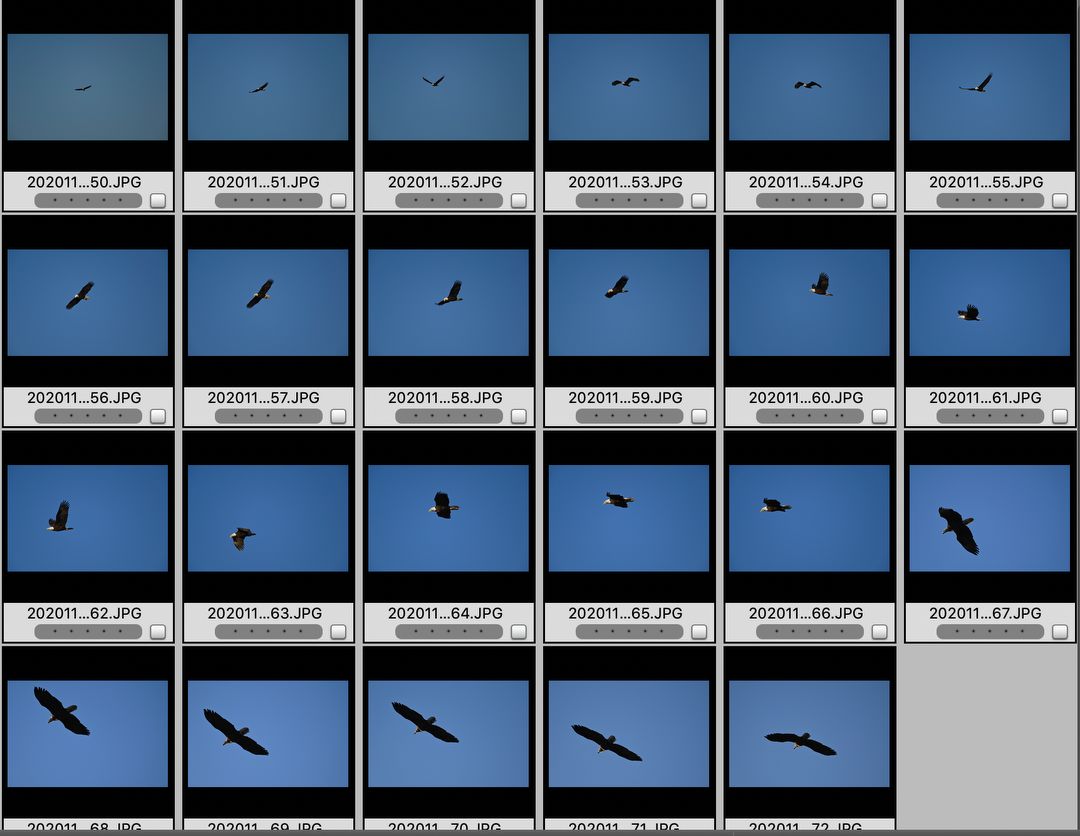
While I didn’t get the autofocus test I was hoping for (closer would have challenged the system more), the camera performed well. It had no problem tracking this bald eagle as it flew closer to me than anything else that day. Every frame was sharp, despite my struggles to keep the bird centered as it flew almost directly overhead.
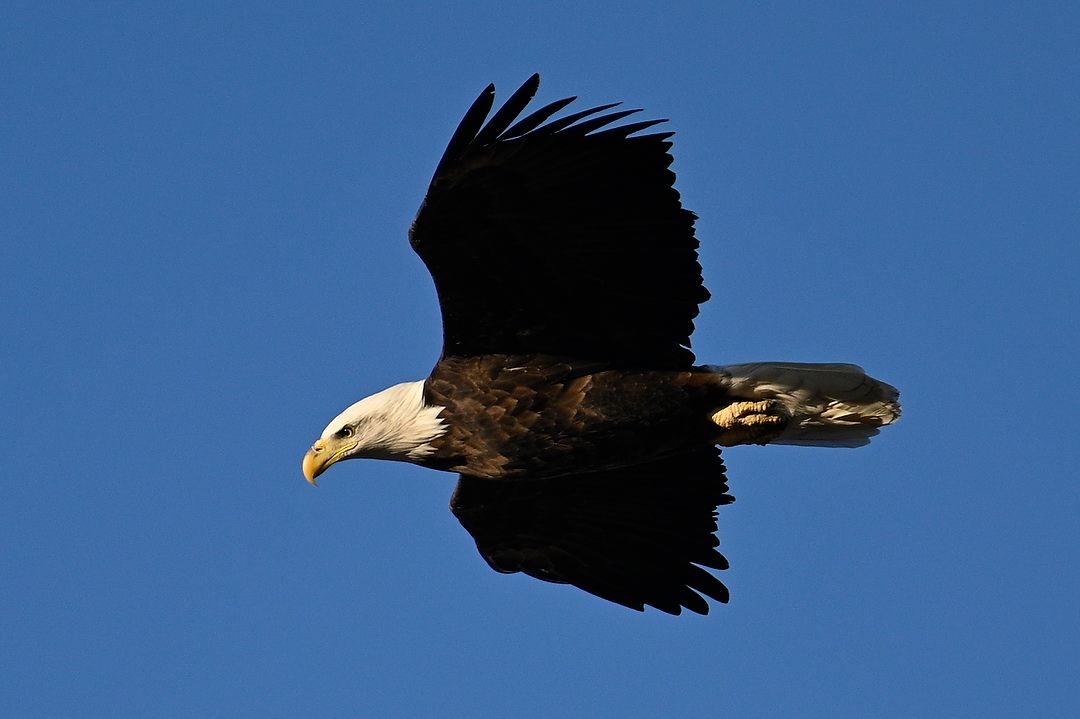
A cropped view from the bald eagle overfly. Nikon Z 6 II, Aperture Priority, Sunny white balance, ISO 500, 1/2000 at f/5.6 in Matrix metering, -0.3 EV, Nikkor VR 200-500mm f/5.6E lens at 500mm.
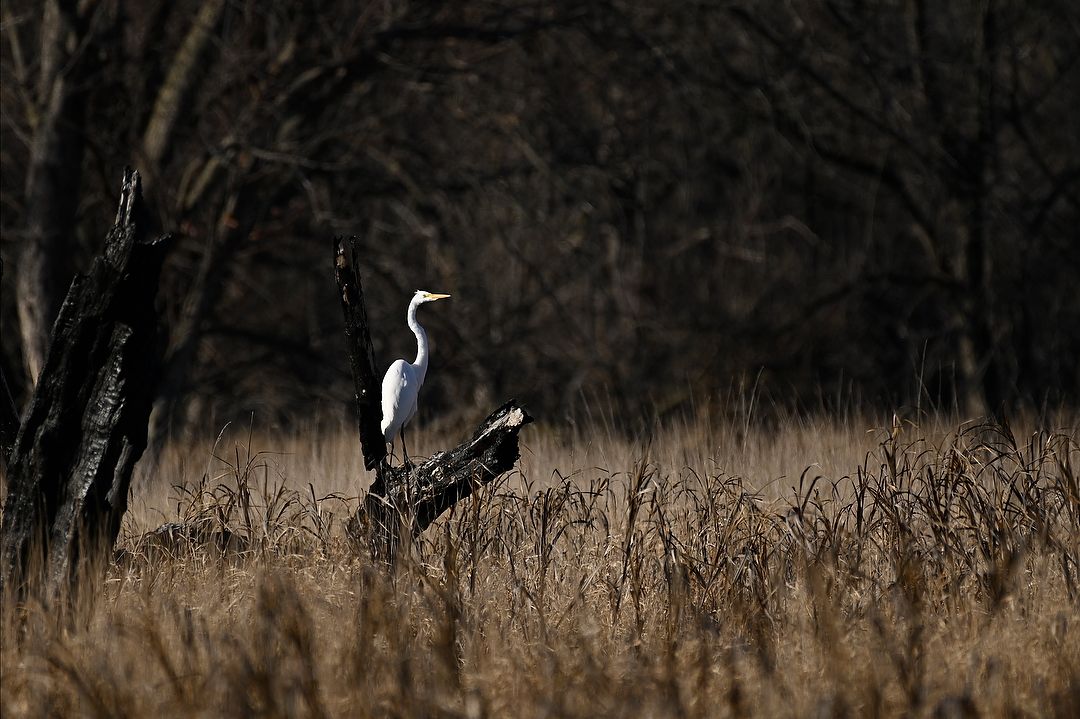
Of course, there are other birds at the refuge in addition to the snow geese and bald eagles. This egret was on the lookout in an old burned area. The contrast between it (white) and the surroundings (black and brown) really made it stand out, as I dialed in some heavy underexposure. Nikon Z 6 II, Aperture Priority, Sunny white balance, ISO 250, 1/2000 at f/5.6 in Matrix metering, -1.7 EV, Nikkor VR 200-500mm f/5.6E lens at 500mm.
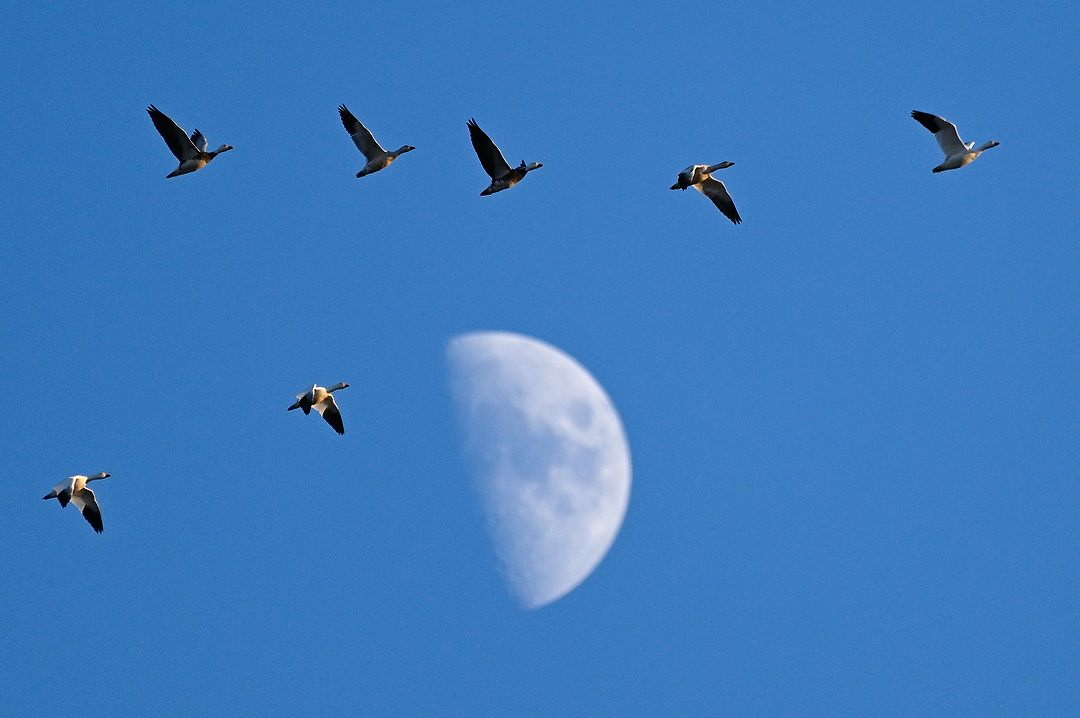
As sunset approached, I was camped out in the warm light hoping for the geese to lift off en masse. Then I noticed the moon to the west and turned my attention there. Nikon Z 6 II, Aperture Priority, Sunny white balance, ISO 1100, 1/2000 at f/5.6 in Matrix metering, 0.0 EV, Nikkor VR 200-500mm f/5.6E lens at 500mm.
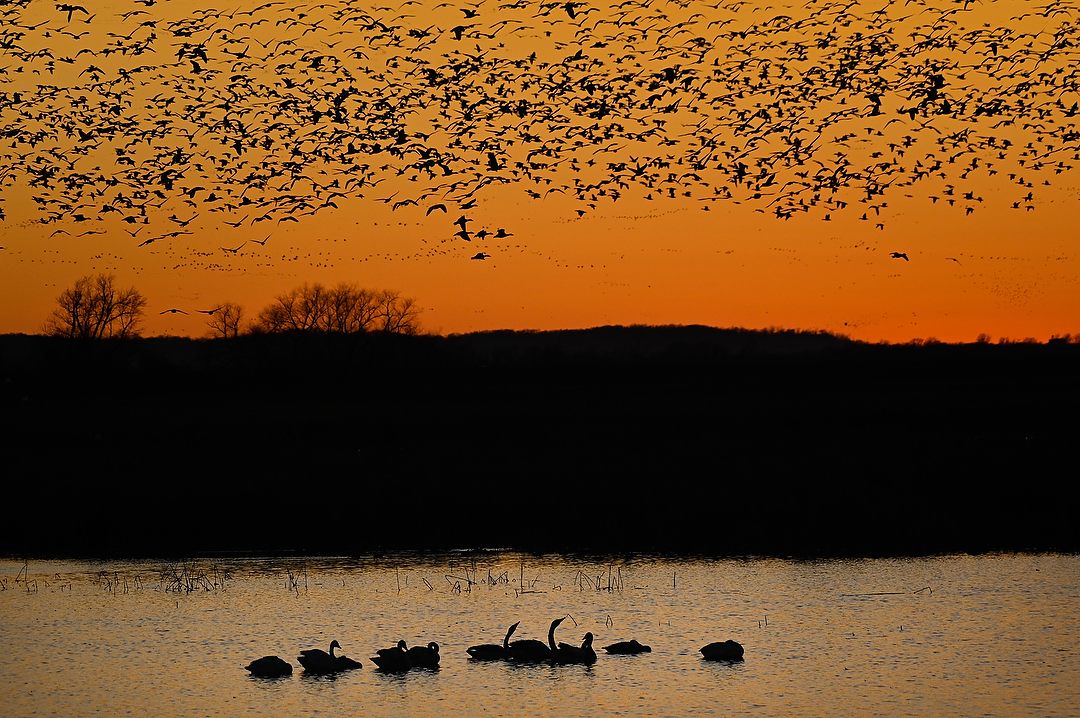
I was actually driving out of the refuge, headed home, when I noticed this group of swans. The dying sunset was reduced enough in brightness to make its exposure match up well with the reflection of the light in the water. Nikon Z 6 II, Aperture Priority, white balance, ISO 500, 1/640 at f/6.3 in Matrix metering, -1.0 EV, Nikkor VR 200-500mm f/5.6E lens at 200mm.
(If you like this story, please share it with your friends and let them know about the links on photography that I post on my business Facebook page, and I’m also on Instagram. And if you’re curious about the workshops I teach, you can find them here. And, you can subscribe to this blog on my home page.)

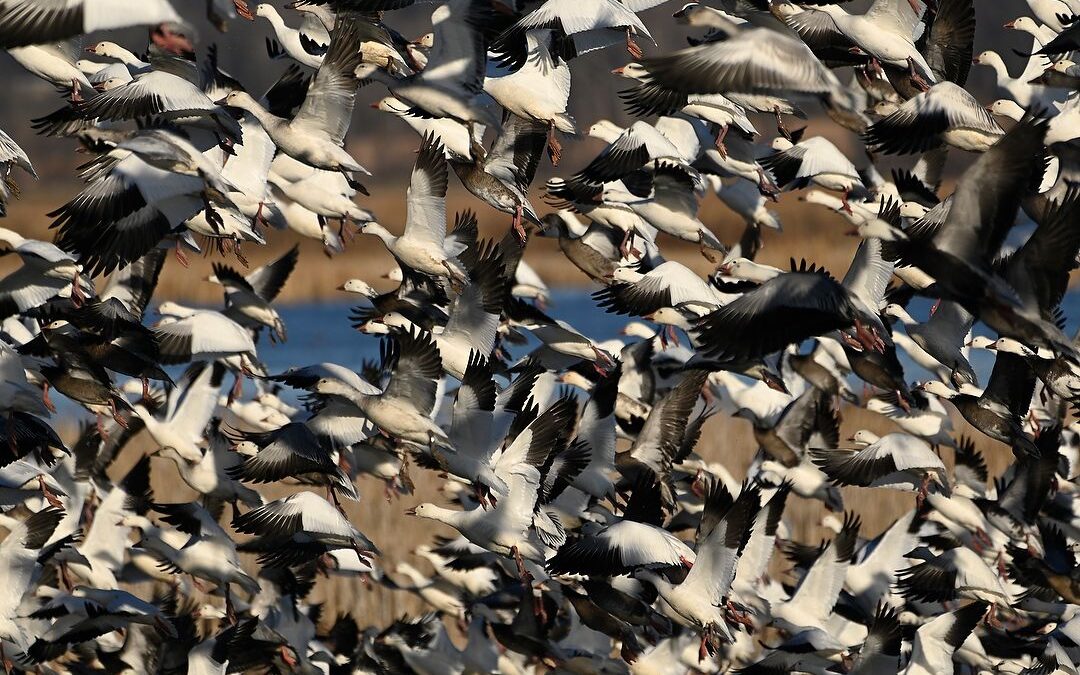
Hi Reed Hoffmann, your shots are awesome.
I am very interested in Z6II.
But I want to know, can its ability to track focus on small birds be comparable to the D500.
I hope you can do some tests when you have time.
Thank you.
Jack HOO
Hi Jack. In short, no, it’s not quite as good as the D500 at tracking fast, erratically moving subjects. It does a good job, but the D500 had Nikon’s best AF system (until the introduction of the D6), and having a new hybrid AF system, the Z cameras are getting better with each generation (main difference in performance between the version I and version II models), but not quite to that level yet. Having said that, I’ve already done a fair bit of action photography with the Z 6 II, and happy with it more often than not. Nikon is expected to have an action oriented Z camera later this year, which will put a priority on fast focus and frame rate. I’m saving my pennies for that! 🙂
Thank you Reed- love the last shot at dusk with swans in the water and birds a flight- the contrast of the two…is presented so well….- I am excited to try my new Z6II- I traded in my Z7 and 24-70F4 for the z6II and paid like “nothing’ for it- I figured I really did not need 45mg photos….. and I had purchased the new 24-70 not too long ago….. of the few shots I have taken so far with the 6- I definitely noticed a difference with the new processor and speed- take care- happy holidays
Yes, John, I agree. And I’m working on another post where I was able to really put the AF of the II to the test.
Thanks Reed- great story & images!
What focus settings did you use
Norm
Good read as always.
Sorry, Norm, thought I had answered this. I’ve mostly been using Wide Area Large, although playing with Small and some of the other options. In general, I prefer to use the smallest grouping of sensors I can while still being able to stay with the subject movement. For the original Z 6, I’ve mostly used Wide Area Small for action like this.
Thanks Reed. Great that you were able to do BIF with the 200-500 & z6ii!